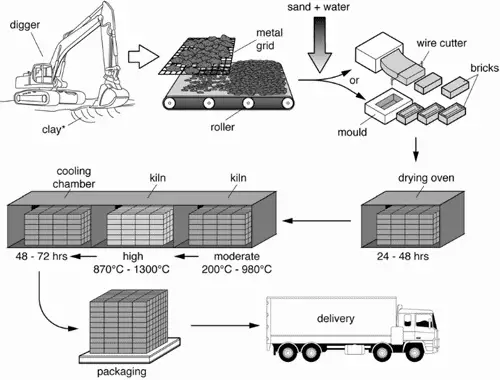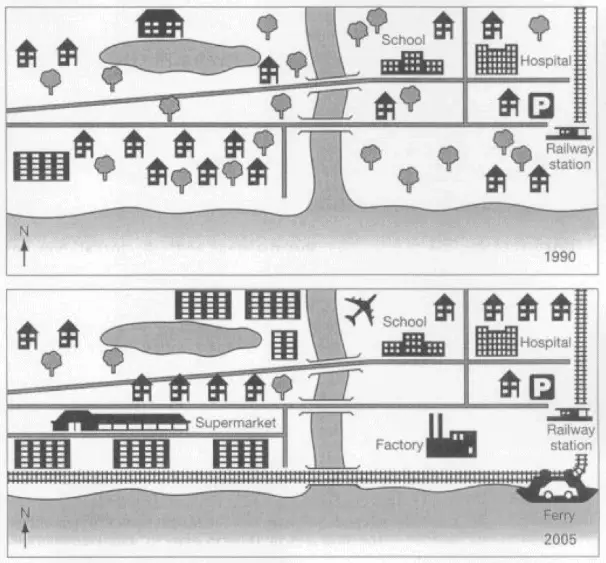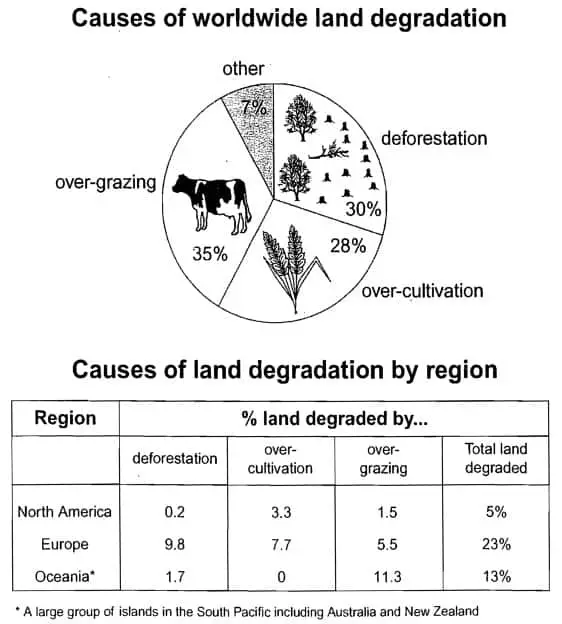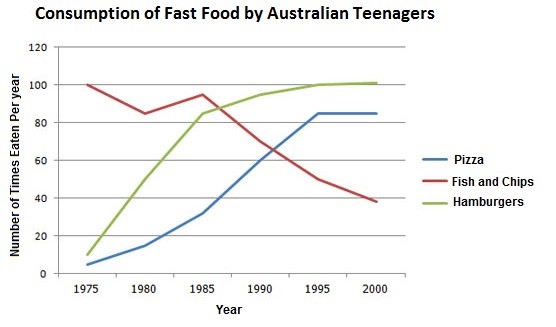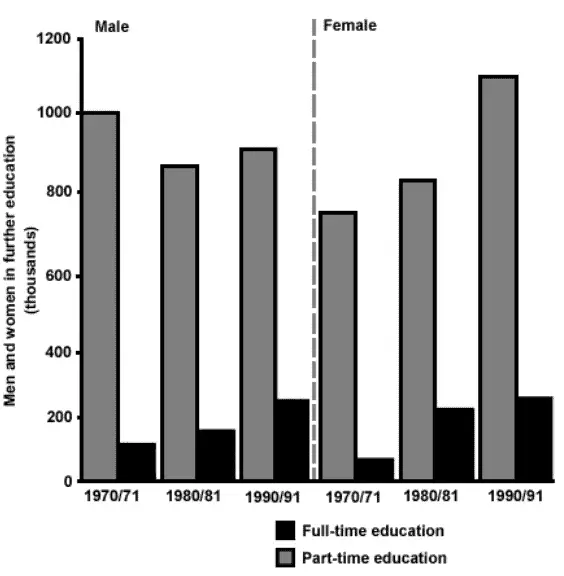IELTS Academic Summary Writing Tips
Tip 1: Select the actual main features
Take time to analyse the question AND what the main features it is showing are. Remember, 'main features' does not mean just any 3 numbers you can read from the visual data. It means that you need to look at, study and interpret what the main trends that the graph/chart/table is showing.
The numbers/features that you pick should link to what the overall trends are. Just giving the highest or lowest number is usually not a main feature and if you give those random type details as your main features then you will not be summarising the information and you will definitely lose marks for Task Achievement.
So, take your time to really read, understand and interpret what the overall trends are from the graphs/charts you are given.
Tip 2: Write an overview paragraph.
Many students skip this step and their band score suffers as a result. All you need to do is write a short paragraph, just 2 sentences saying what the two or three main points of the visual data are.
You do not include any details/numbers in this paragraph but be careful that you write about the main trends/points that the visual data shows. Do not write about random things, such as, the highest or lowest numbers if there is no reason too, you might want to do that in the details paragraph when making comparisons.
Tip 3: Be careful with synonyms
Whilst you absolutely should be using synonyms to restate the title of the visual data in the first sentence of your answer, you should only be doing so when you are sure that your synonyms match correctly.
This can be tricky, for example, you might want to substitute the word vehicle for car, however, are they really synonyms? Cars normally refers to four wheeled cars, whereas vehicles include lorries, vans, motorcycles and so on, these are clearly not the same.
Therefore, if you cannot think of good synonyms for the words in the question, don’t worry, just use the same words but you might look for another way to rewrite the title, such as, switching the clauses around, or altering the word order in some other way which will show the examiner that you have good control of grammar.
Tip 4: Practice different question types.
There is no worse feeling than turning up on test day having prepared really well for line graphs and charts because you think you are most likely to get them and then you actually get a ‘maps’ question.
Maps and process diagrams in particular need to be prepared for separately as they have their own specific type of language and vocabulary which goes with them. Don’t try to cut corners just prepare properly in the first place.
Tip 5: No conclusion
They would basically be the same thing. In my method described above, you will see that I recommend always having an overview paragraph as your second sentence and no conclusion.
Tip 6: Do not write specific numbers
Unless you are certain they are correct do not write specific numbers. IELTS are great at supplying line graphs where it is difficult to tell what they exact number is.
In this case, it is better to use the words approximately, nearly, or just under, rather than simply guessing. See it as another way to show how good your English is. If you do not do this then you are in danger of describing the data incorrectly and will lose marks for task achievement.
Tip 7: Play safe with your grammar
Be aware that you will lower your band score if you try to use more advanced grammar incorrectly. It is often better to ‘play safe’, i.e. use sentence structures, words and phrases that you are 100% sure about. In this way you can minimise your errors and hopefully get a higher band score.
Tip 8: Structure, structure, structure
Always make sure that you structure your response clearly and effectively. If you do not it can be very difficult for the reader to gain a clear idea of what you are summarising.
A good summary should mean that the reader can actually go away and draw out the information and get it quite close to the real thing. I recommend using and practising writing using the 6 step process above. If you follow this every time, you will feel more confident on test day, you won’t miss out any important steps and you will write a well-organised summary that is nice and clear for the examiners.
Tip 9: Make sure you write enough
It is a nice idea to have a few practise goes under timed pressure and on IELTS official answer paper. This will mean you know how many lines you should be writing on the actual test paper and you must absolutely get used to working under timed pressure. Many students fail to do this and then on test day they end up running out of time and not writing enough.
Tip 10: Feedback
Finally, you should always be seeking feedback on your practise attempts, otherwise, how will you know what mistakes you are making and how to get better? Ideally, this would be someone with experience of IELTS such as a suitable teacher, or examiner. Here is one resource I highly recommend you use to get that feedback quickly and easily.
 Hello everyone! Former IELTS examiner Tim James here (pictured), and on this page I am going to show you exactly how to do IELTS Academic Writing Task 1. Here's what to do:
Hello everyone! Former IELTS examiner Tim James here (pictured), and on this page I am going to show you exactly how to do IELTS Academic Writing Task 1. Here's what to do:

